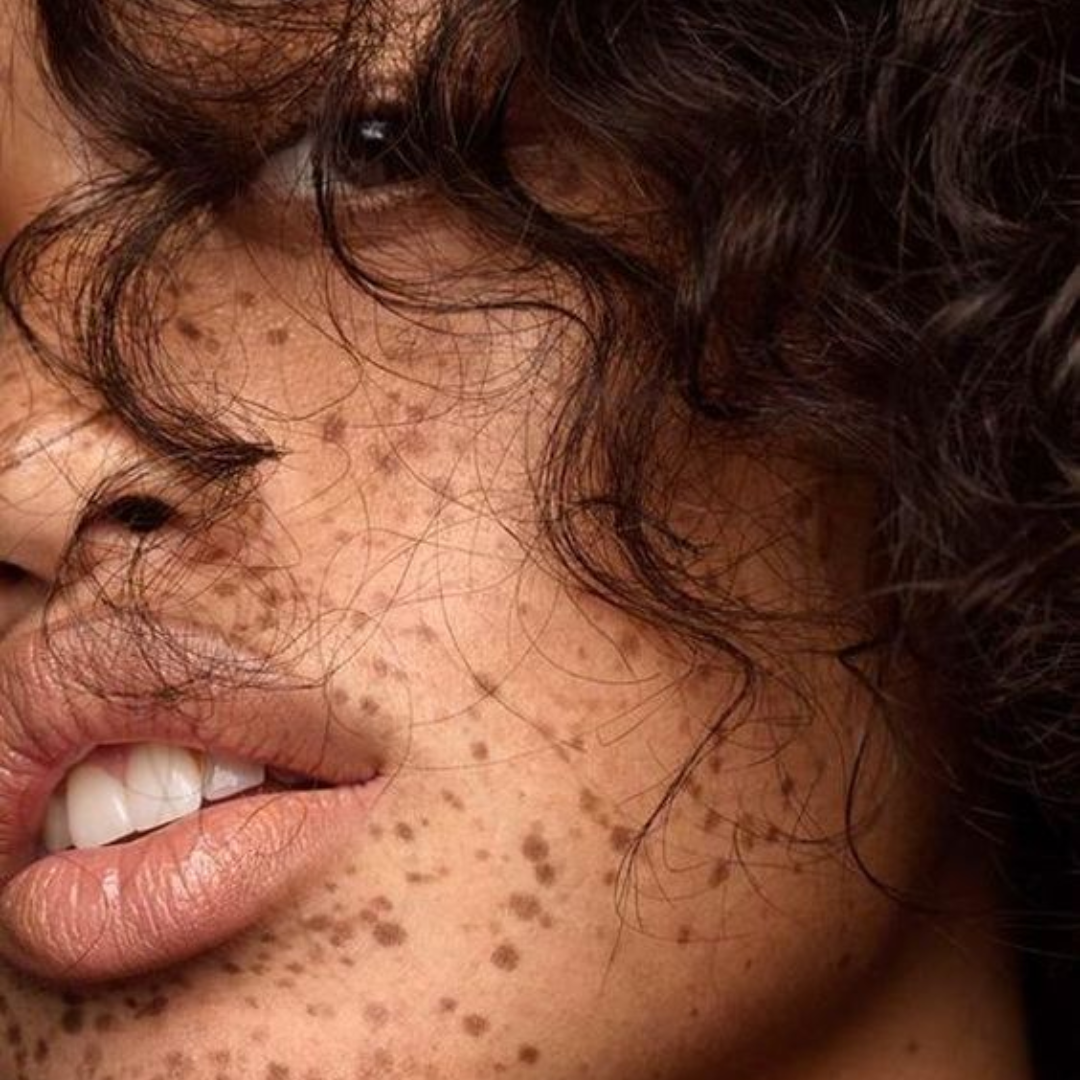
Why do freckles appear? Decoding
Share
Freckles, those small pigmentation marks often considered signs of beauty, are the result of a complex process linked to genetics,sun exposure and skin sensitivity. In this article, we analyze the various factors that contribute to the appearance of freckles and their significance.

Why do freckles appear?
- Genetics
Genetics plays an essential role in explaining the appearance of freckles, also known as ephelides.
The link between genetics and freckles lies in the hereditary transmission of certain genetic traits that influence skin pigmentation. Freckles are often associated with a higher concentration of melanin, the pigment responsible for skin, hair and eye color.
Several genes involved in melanin production and the regulation of its distribution in the skin have been identified as having an impact on the propensity to develop freckles. These genes influence not only the amount of melanin produced, but also how it is distributed over the skin's surface.
If a person's parents or grandparents have freckles, it's likely that they have inherited certain genetic variations that favor the development of these pigment marks. However, genetics is not the only factor at play, and the environment, such assun exposure, also plays a crucial role in the expression of freckle-related genetic characteristics.
In fact, freckles are the result of a complex interaction between genetics, which influence melanin production, and sun exposure, which triggers this production specifically in certain areas of the skin. If your pigmentation genes respond more intensely to UV rays than average, freckles are likely to appear.
Individuals carrying certain versions of pigmentation-related genes may have a more intense response to the sun's ultraviolet (UV) rays, leading to increased melanin production and, consequently, the appearance of freckles.
Sun exposure is therefore one of the main triggers for the appearance of freckles. When the skin is exposed to the sun's ultraviolet (UV) rays, melanocytes react by increasing the production of this pigment. In freckle-prone individuals, this reaction can be more intense.
As you may have noticed, freckles generally appear on areas of the face, arms and shoulders that are more frequently exposed to the sun. This explains why these marks are often more pronounced during the summer months, or in people living in regions with high levels of sunshine.
The variety of skin types plays a crucial role in the propensity to develop freckles. Fair, sun-sensitive skins are more likely to react with increased pigmentation in response to UV exposure. Individuals with naturally higher pigmentation often have natural protection against sun damage, reducing the risk of developing freckles.
It's important to note that people with darker skin can also have freckles, although these may be less visible due to the higher pigmentation of their skin.
Are freckles moles?
Moles, or nevi, are local accumulations of melanocytes in the skin. They can vary in color, from brown to black, depending on the amount of melanin they contain. Although freckles and moles are distinct phenomena, they share similarities in their pigment-related origins.
People with moles may be more prone to developing freckles, as they already have higher concentrations of melanocytes in certain areas of their skin. However, it's important to note that not all individuals with moles necessarily develop freckles, and vice versa.
To find out more about moles, see our article.
Is it rare to have freckles?
Freckles are generally observed on fair skin, which is more sensitive to the effects of the sun. It's important to note that the visibility of freckles can differ from birth, sometimes becoming apparent over the years, especially during childhood, following repeated exposure to the sun.
This underlines the fact that even if freckles are not initially noticeable, they can appear over time, highlighting the influence of the environment, particularly sun exposure, on their appearance. The frequency of these pigment marks varies according to genetic characteristics and individual skin type. In short, freckles are not exclusively linked to birth, and can emerge during growth.
When do freckles disappear?
In general, freckles do not tend to disappear on their own. They are often present from childhood and persist throughout life. However, their visibility can vary according to various factors.
You can choose to use lightening products or dermatological treatments to reduce the appearance of freckles, but it's always advisable to consult a health professional.
How can I prevent freckles?
Here are a few tips to prevent freckles and protect your skin:
- Sun protection:Sun exposure is one of the main triggers of freckles. Use sunscreen and cosmetic products with a high sun protection factor, especially on exposed areas such as the face, arms, shoulders and décolleté. Reapply frequently, especially after swimming or perspiring.
- Avoid hours of intense sunlight: Limit your direct exposure to the sun during the hours when UV rays are strongest, generally between 10 am and 4 pm.
- Wear protective clothing: In addition to sunscreen, wear clothing that effectively covers your skin. Wide-brimmed hats can also protect the face.
- Sunglasses: Protect your eyes and surrounding skin by wearing UV-blocking sunglasses.
- Skin hydration: Well-moisturized skin is less likely to develop freckles. Use moisturizers adapted to your skin type.
- Antioxidants in the diet: Certain antioxidant-rich foods, such as fruits and vegetables, can help protect skin from sun damage.
- Avoid the use of UV lamps: Tanning beds and UV lamps can also contribute to the growth of freckles. Avoid excessive use.

